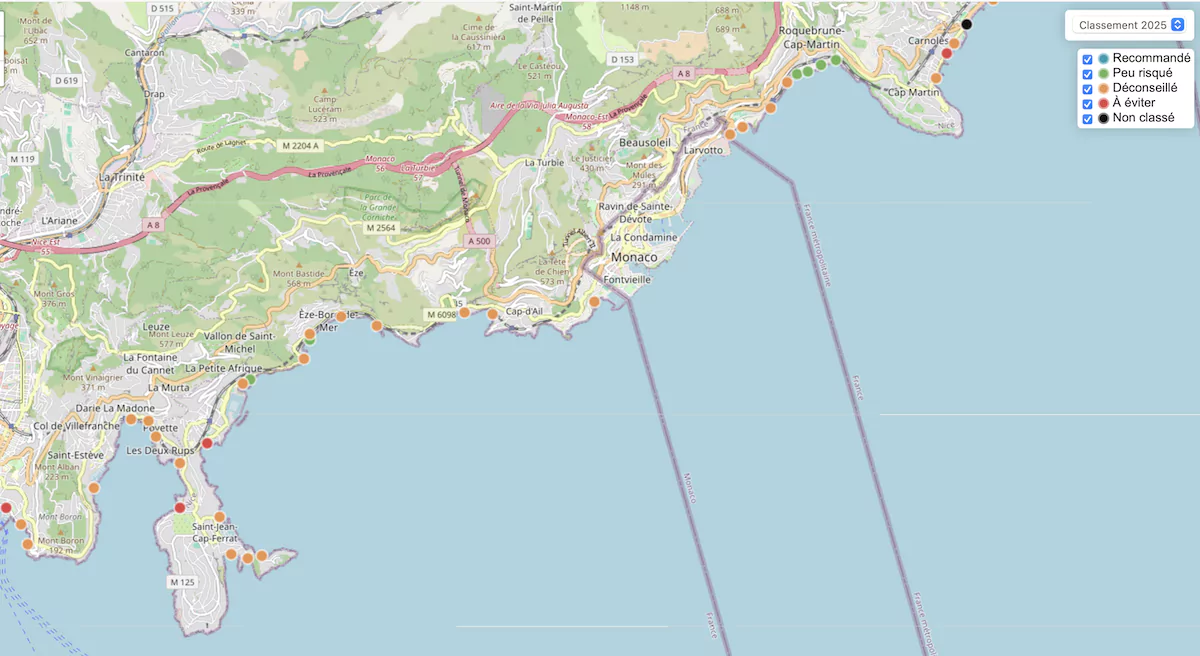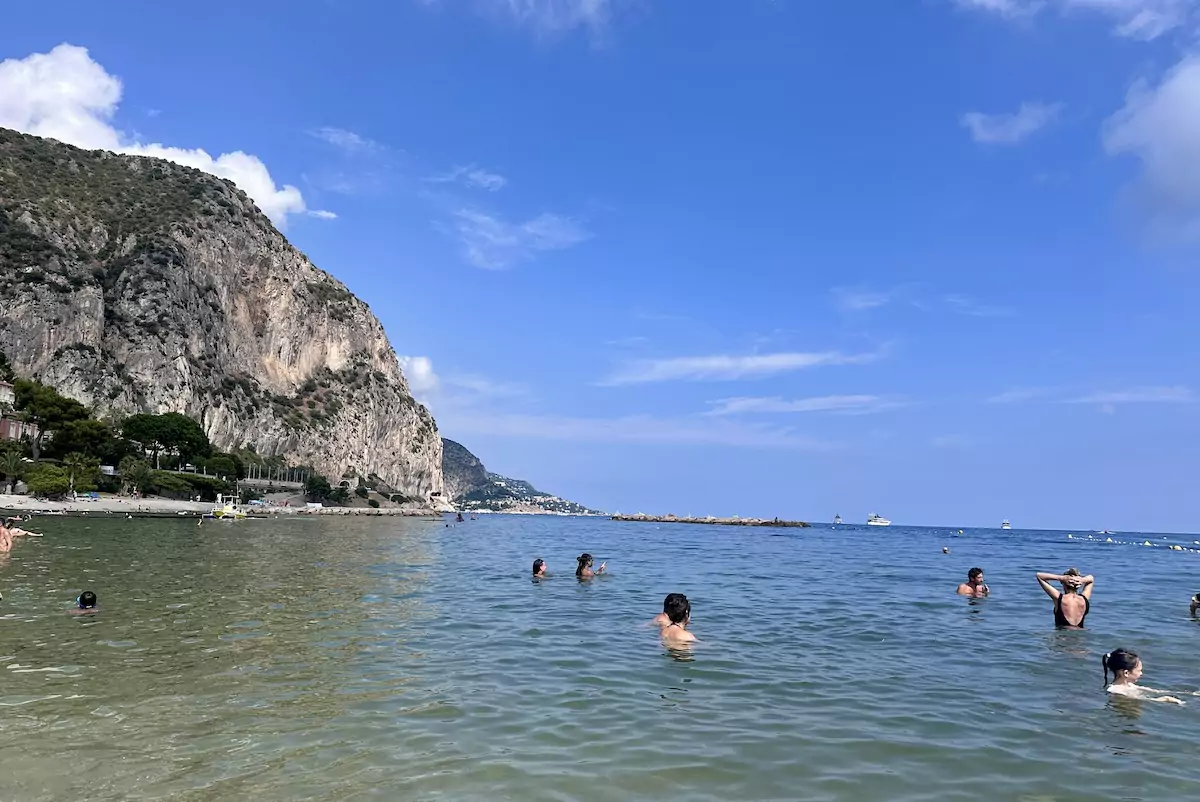With summer approaching and temperatures rising, Monaco residents and visitors are setting their sights on the Riviera’s pristine shores. But not all waters are equally inviting, according to the latest ‘La Belle Plage’ classification report, which offers a comprehensive assessment of bathing water quality around the Principality.
The ‘La Belle Plage‘ classification system, developed by environmental organisation Eau& Rivières, analyses water samples collected over four years by Regional Health Agencies (ARS). Unlike official European rankings, this methodology specifically addresses health risks by calculating the percentage of ‘Good’ water samples.
“A beach whose samples are not good once every three is indeed a polluted beach,” notes the organisation, questioning whether users would “go to the pool if one in three samples was not good.”
The classification system employs a four-tier approach to categorising beaches:
Recommended: At least 95% of water samples classified as ‘Good’. Low Risk: More than 85% of samples classified as ‘Good’ Not Recommended: Between 70-85% of samples classified as ‘Good’. To be Avoided: Less than 70% of samples classified as ‘Good’.
According to the 2025 analysis, none of the beached in the Monaco area achieved the ‘Recommended’ rating.

Safest options remain limited but high quality
For those seeking the highest quality experiences, only three beaches in regions surrounding Monaco earned the ‘Recommended with Low Risk’ classification. Amongst them, the Petite Afrique Est in Beaulieu-sur-Mer stands as the sole recommended beach in its municipality, offering a safer alternative to neighbouring options. Following, the Marco Polo Beach in Èze similarly achieved the ‘Low Risk’ classification, making it a prime destination for cautious bathers. The Roquebrune-Cap-Martin coastline from Côte Ouest to La Buse completes the list of safer swimming locations, though notably, Roquebrune Beach on the eastern side falls into the ‘Avoidable’ category.
Concerning trends in popular locations
The report reveals worrying water quality issues at several high-profile destinations. The entire Villefrance-sur-Mer area received a ‘Not Recommended’ classification, with water samples showing contaminations in 15-30% of tests. Most beaches in Saint-Jean-Cap-Ferrat earned the same status, while the Passable Beach of the municipality was designated as one to be avoided entirely.
The Cap d’Ail area, despite its proximity to Monaco, failed to achieve recommended status, with all beaches rated as ‘Not Recommended’.
Beaches to strictly avoid
Four beaches surrounding Monaco ranked in the most concerning category, with fewer than 70% of water samples meeting ‘Good’ standards:
Passable (Saint-Jean-Cap-Ferrat), Fourmis (Beaulieu-sur Mer), Roquebrune Beach (east side), and Fossan (Menton).
The 2025 report notes “a sensible global deterioration of coastal beach quality between 2024 and 2025,” attributing this trend to “a rainy summer 2024”. According to the report, “intense rainy episodes often cause malfunctions in sewage systems and watershed runoff in livestock areas, which carry pollution to bathing waters.”
As Monaco and the surrounding French Riviera continue to position themselves as premium tourist destinations, these water quality concerns raise questions about environmental management and infrastructure investment in the region.
Monaco Life is produced by a team of real multi-media journalists writing original content. See more in our free newsletter, follow our Podcasts on Spotify, and check us out on Facebook, Instagram, LinkedIn and Tik Tok.
Photo of La Petite Afrique in Beaulieu sur Mer, credit Cassandra Tanti
